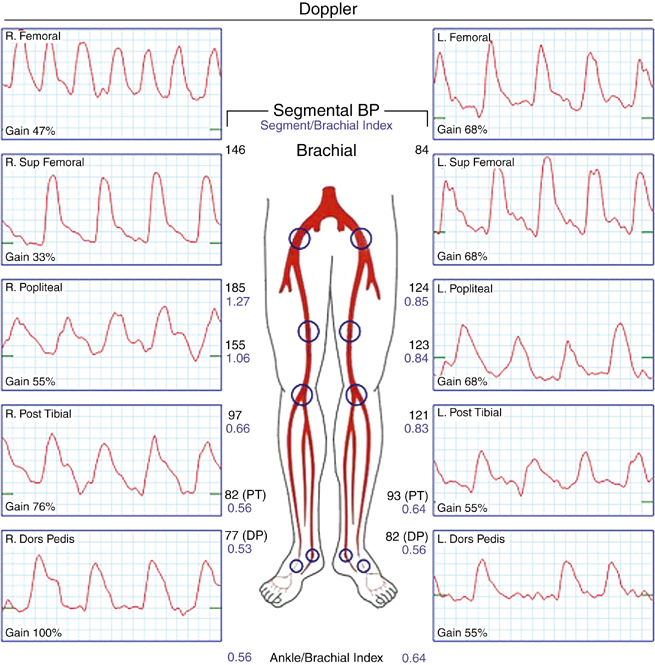Extremity pressure measurements are one of the most basic methods for diagnosing the level and severity of PAD. This starts with the basic ABI, which provides a very quick, reproducible, and noninvasive measurement and gives an estimate of the disease’s severity. In the absence of PAD, the ABI will be greater than 1.0. Although the definition of PAD is an ABI less than .90, some patients have an ABI greater than .90 but less than 1.0 as a result of excellent collaterals bypassing the AIOD. Measuring segmental systolic occlusive pressures using a blood pressure cuff applied at various levels of the leg with a Doppler probe provides a quick gauge of the level of disease. In those with AIOD, the segmental pressures are decreased at the proximal cuff thigh level (Figure 1). Most often, vascular labs combine the ABI with lower extremity arterial segmental pressure studies to better define if inflows, outflows, or combined disease exists.
Physiologic and Noninvasive Studies to Document Severity and Extent of Aortoiliac Occlusive Disease
Extremity Pressure Measurements and Doppler Analysis
![]()
Stay updated, free articles. Join our Telegram channel

Full access? Get Clinical Tree


Thoracic Key
Fastest Thoracic Insight Engine

